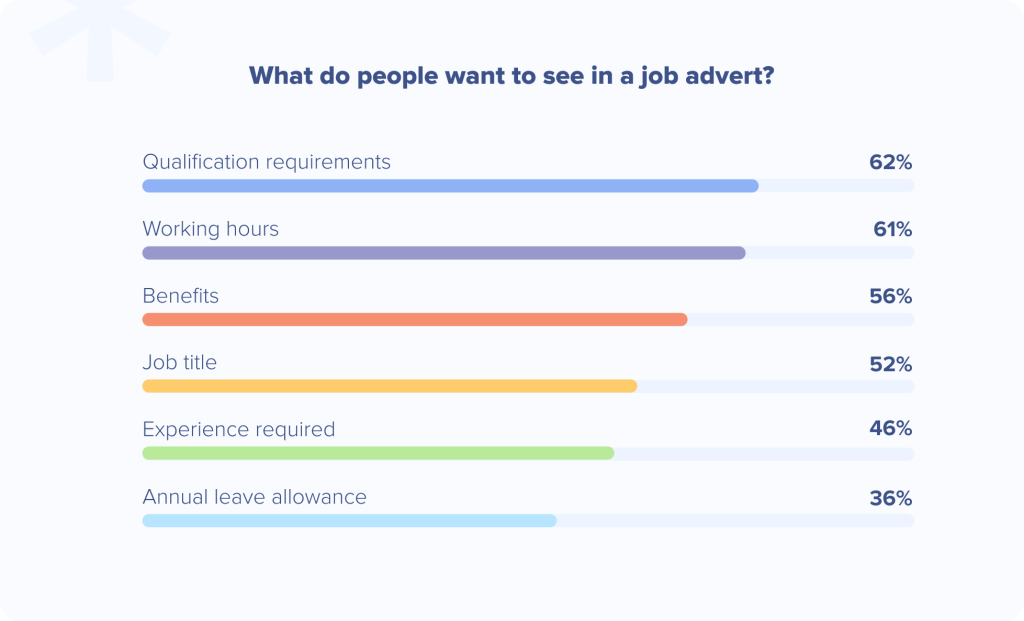
Subscribe for updates
Get talent acquisition best practices, trends, and news delivered directly to your inbox.
By entering your email, you agree to receive marketing emails from JobScore
Attracting qualified candidates tops the list of global talent acquisition challenges, with 46% of organizations citing it as their primary recruiting concern. Other top challenges aren’t nearly as prevalent, with 29% of organizations citing filling complex technical roles, 26% citing improving candidate experience, and 25% citing managing a high volume of applications.
The skilled talent shortage is only expected to get worse as new roles continue to emerge — and other roles see declines or disappear altogether. The World Economic Forum suggests that 59% of the world’s workforce will need training by 2030 to meet evolving skill demands. While 85% of organizations will prioritize upskilling their workforce, 70% expect to hire staff with new skills. This may be more easily said than done when qualified candidates are in short supply.
The good news is that there are many things you can do to improve your candidate quality. Creating authentic candidate connections, optimizing your hiring process, and consistently improving can help you identify qualified candidates when your team needs them.
Build a high-quality talent pipeline
A strong talent pipeline ensures you have qualified candidates ready when positions open. Building this pipeline requires more than posting jobs and hoping the right people apply. You need proactive sourcing strategies that connect you with talent before they start actively looking for new opportunities.
The most successful companies treat pipeline building as an ongoing activity rather than a reactive scramble when positions open. This approach reduces time to fill, improves candidate quality, and gives you a competitive edge when pursuing in-demand talent.
Write job descriptions that attract the right people
Your job descriptions serve as your first filter for candidate quality. Write a compelling job description that accurately reflects the role and sells the opportunity to the most discerning candidates.
Qualification requirements are the most sought after details, followed by working hours and benefits. Make sure this information is easy for candidates to find. Your goal should be to remove barriers that stand in the way of candidate conversion.

Be careful about including unnecessary job requirements that artificially limit your talent pool. More than half of companies (58%) that removed at least one degree or work experience requirement saw an increase in the number of applicants. And more importantly, 84% indicated that candidates they hired after redefining requirements performed just as well on the job.
Diversify your sourcing channels
Qualified candidates might be found in any number of places — and diversifying your sourcing channels can increase your chances of finding them.
Employee referrals often yield the highest quality candidates, so create a structured referral program that makes it easy for team members to recommend qualified contacts. Well-timed internal communications and enticing incentives can encourage your team members to help you identify skilled talent.
You might also try new job boards, online communities, professional associations, and campus recruiting opportunities to test which sources are the most effective for your specific roles.
Maintain candidate relationships
The best candidates may not be actively looking or currently open to new opportunities.
Build a talent network and keep in touch with high potential candidates by checking in on their career milestones, forwarding information relevant to their current role or industry, and sharing job openings as they’re available. This positions you as an employer of choice when these professionals decide to make a move.
Maintaining relationships with ‘Silver Medalists‘ and high performing company alumni is particularly important, as these people have been pre-vetted for quality and may be open re-engagement for the right opportunity.
Showcase your employer brand
Your employer brand directly impacts candidate quality. In fact, 87% of U.S. employees say reputation influenced their decision to take their current role.
Qualified candidates have options around where to work and tend to gravitate toward companies with compelling cultures and clear values.
Share authentic stories about team member experiences, growth opportunities, and the meaningful work your company does. Video testimonials from current team members can be particularly effective. Publish these where candidates are researching, such as your careers site, social media channels, and job descriptions.
Simplify your application process
Nearly half of candidates (49%) agree that most job application processes are too long and complicated. This hurdle can drive away qualified candidates before they finish applying.
Keep your initial job applications focused on essential information, allowing candidates to use their resume or LinkedIn profile to complete it. Reconsider whether you need a cover letter: Only 74% of recruiters who require cover letters will actually read them. And use screening questions strategically — the right insights can help you identify a qualified candidate with a nontraditional background.
Experiment with adding or removing application questions to understand how they impact your candidate quality and volume. A simple application process makes it easier for candidates to express interest, which may lead to a higher volume of both qualified and unqualified applicants. Your best bet might be to optimize for increasing qualified applicants rather than to decrease your low-quality candidate volume.
Get back to applicants quickly
Half of candidates expect to schedule an interview within a week of applying — or they’ll give up on your hiring process entirely. Get back to your top choice candidates quickly so you don’t miss the opportunity to get to know them.
Set up automated acknowledgments when applications are received, provide clear timelines for next steps, and proactively update candidates if your timeline changes. An applicant tracking system like JobScore can make it easy for you to quickly identify your highest quality applicants and schedule their first interview in a timely manner.
Optimize your evaluation process
Most recruiters (82%) have lost quality talent due to a poor interview process. High quality candidates have other opportunities available to them and aren’t likely to stick around for a lengthy, disorganized, or disrespectful hiring process.
Optimize your evaluation process to engage and convert your most qualified candidates. As an added bonus, building a positive recruitment process can improve your employer brand and help you attract more top talent in the future.
Speed up your interview process
More than half of employers make candidates go through four or more interviews, and have a process that lasts four to six weeks. While thoroughness matters, every extra step can increase the chances of your most qualified candidates dropping out.
Dig into your data to see what’s happening at each workflow stage and take appropriate steps to improve. For example, eliminate or change up a workflow stage if you find that most candidates are easily advancing to the next stage. Or combine two stages if you truly need them all, but have a significant number of candidates dropping out when they accept other offers. You may also need to remind interviewers about the importance of prompt feedback so you can make decisions faster.
Smaller adjustments to improve your time to hire can also be worthwhile. This might include implementing candidate self-scheduling to eliminate back and forth emails or building out candidate email templates to streamline communications.
Use structured interviews effectively
Structured interviews with consistent questions and evaluation criteria lead to a smoother and more fair hiring process. This can be an impactful way to keep your most qualified candidates engaged. In fact, 78% of candidates say the smoothness of the interview process would affect their final decision on whether to accept the job.
Take the time to build structured interviews at the outset of each search and train your interviewers on how to use them.
Create a positive candidate experience
Every candidate interaction influences their decision to engage with your team. Consider the entire candidate journey — from the first touchpoint to the last — and optimize to attract and engage the most qualified candidates.
For example, learn your candidate’s motivations for finding a new opportunity and help them understand how your organization aligns with their goals. Get back to candidates in a timely manner and provide feedback as you’re able. Treating all candidates with respect will keep your most qualified candidates engaged in your hiring process and help you keep rejected candidates in your talent pipeline for future opportunities.
Leverage technology wisely
An applicant tracking system like JobScore can help you streamline your hiring process without losing the human touch.
Use technology to help you send consistent candidates communications, identify bottlenecks in your process, and guide interviewers to provide a positive experience. The right solutions can simplify hiring and improve outcomes.
Train your hiring team
Many hiring managers and interviewers never receive formal interview training.
Invest in teaching your hiring team how to evaluate candidates effectively, recognize their own biases, and sell your company to top talent. Consistent training ensures all interviewers represent your company professionally and keep qualified candidates engaged in your hiring process.
Make competitive offers quickly
Move quickly once you decide on your top-choice candidate. Delayed offers risk losing candidates to other opportunities or creating doubt about your interest. Most candidates (61%) say they receive an offer within one week after the final interview.
Have your compensation ranges defined in advance and be prepared to make offers within 24-48 hours of final interviews when possible. Maintain engagement by sharing a bit about why you chose them and how your opportunity aligns with their goals.
A verbal offer gives you the opportunity to share how excited you are to potentially welcome them to the team and allows you to answer any questions the candidate has. Follow up with formal written offer that provides relevant contact information and requests a response by a specific date.
Measure your candidate quality
Tracking candidate quality metrics helps you identify what’s working and refine your talent attraction strategies for better results.
For example:
- Source of hire reveals which channels deliver your highest quality candidates
- Candidate churn helps you track when — and why — job seekers drop out of your hiring process
- Candidate NPS enables you to measure your candidate experience
Track your metrics over time to identify trends, measure results, and continually improve. You might find that updating your job description for an evergreen role led to higher applicant quality. Applying similar changes to other job descriptions could have a similar effect.
Final thoughts on attracting qualified candidates
Attracting qualified candidates will always be a top priority and it’s important to keep that in mind when designing your recruitment process. Use your employer brand to draw the right candidates in. Host interviews that enable reciprocal decision making for your interviewers and candidates. Make decisions in a timely manner, and communicate thoughtfully and frequently. Track key performance indicators and make adjustments to continually improve outcomes.
The companies that win the war for talent aren’t always the biggest or best-funded. They’re the ones that treat candidates with respect, communicate their value proposition clearly, and create efficient processes that identify and secure quality talent. With the right approach, your company can build a reputation that attracts the qualified candidates you need to grow and succeed.
Ready to attract better candidates — faster?
JobScore helps you promote your employer brand, boost employee referrals, and build an engaging candidate experience.



